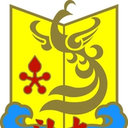[Promoting effect of hyperhomocysteinemia on vascular calcification in rats].
Kľúčové slová
Abstrakt
OBJECTIVE
To explore the effect of hyperhomocysteinemia on vascular calcification and the underlying mechanism of it.
METHODS
Arterial calcification of Sprague-Dawley rats was induced by vitamin D3 plus nicotine. Hyperhomocysteinemia was established by feeding high methionine diet for six weeks and was assessed b y plasma total homocysteine (tHcy) level detected by HPLC method. Calcification was confirmed by von Kossa staining, measurement of calcium content, alkaline phosphatases (ALP) activity and osteocalcin (OC) concentration of vascular tissue. Lipid conjugated dienes formation were determined to reflecting the production of lipid peroxide.
RESULTS
The results showed that there were mass black granules deposited in aortic wall of the calcified rats by von Kossa staining. Calcium content, ALP activity, OC concentration in calcified rats increased by 8.09-fold, 45.57% and 2.81-fold compared with those of the control group (P < 0.01). Calcium content in calcified rats with high methionine diet increased by 34.29% compared with that of the calcified rats, while ALP activity and OC content decreased by 29.13% and 74.69% compared with that of the calcified rats. Lipid conjugated dienes formation in plasma of the rat with high methionine diet and of calcified rats with high methionine diet increased by 1.93 and 2.89-fold compared with those of the control group, respectively (P < 0.01), and in calcified rats with high methionine diet group was increased by 32.90% compared with that of high methionine diet group (P < 0.01).
CONCLUSIONS
Hyperhomocysteinemia could promote vascular calcification, which might be mediated through the production of lipid peroxide.



